Connecting an entire supply chain with a single digital product
The recruitment industry in the UK is deceivingly complex. To the outside world it might appear simple but in fact there is so much going on all the time with a multitude of different stakeholders that all have their own agenda and goals. Effectively the question is: ‘How can a company who needs someone to fulfill a certain job find the best suitable candidate a.s.a.p and how can everyone get paid correctly and on time along the way?”

It is an industry that is, in some cases, still very much run via phone calls and emails and filing cabinets. Why? Because people like to feel they’re in control of their data. On top of that, there is a lot of distrust between different stakeholders and keeping things to yourself is a good way of nurturing that culture.
Engage originally was designed to cater to medium to large organisations. It provides all of these stakeholders, who all have their own goals, a single digital tool for their workflow and offers transparency for everyone along the way. Within the small to medium recruitment agencies market we saw an increasing demand for a product like ours to help grow their business. We sat out to discover if we could offer our solution for this part of the market. My role in this project was to lead the project and design together with tech lead Barnabas.
Reviewing the journey
Before we began tinkering away at our little product that could, we needed to reset ourselves and figure out if the existing user journeys would still hold true for this new market we were trying to cater to. During the discovery phase we talked to small and medium agencies about what they would expect from a tool like ours, we started developing new user journeys, prototypes of product improvements and started working on two missing features: ‘Onboarding’ and ‘inviting a client to collaborate’.
Engage originally was designed to cater to medium to large organisations. It provides all of these stakeholders, who all have their own goals, a single digital tool for their workflow and offers transparency for everyone along the way. Within the small to medium recruitment agencies market we saw an increasing demand for a product like ours to help grow their business. We sat out to discover if we could offer our solution for this part of the market. My role in this project was to lead the project and design together with tech lead Barnabas.
Reviewing the journey
Before we began tinkering away at our little product that could, we needed to reset ourselves and figure out if the existing user journeys would still hold true for this new market we were trying to cater to. During the discovery phase we talked to small and medium agencies about what they would expect from a tool like ours, we started developing new user journeys, prototypes of product improvements and started working on two missing features: ‘Onboarding’ and ‘inviting a client to collaborate’.

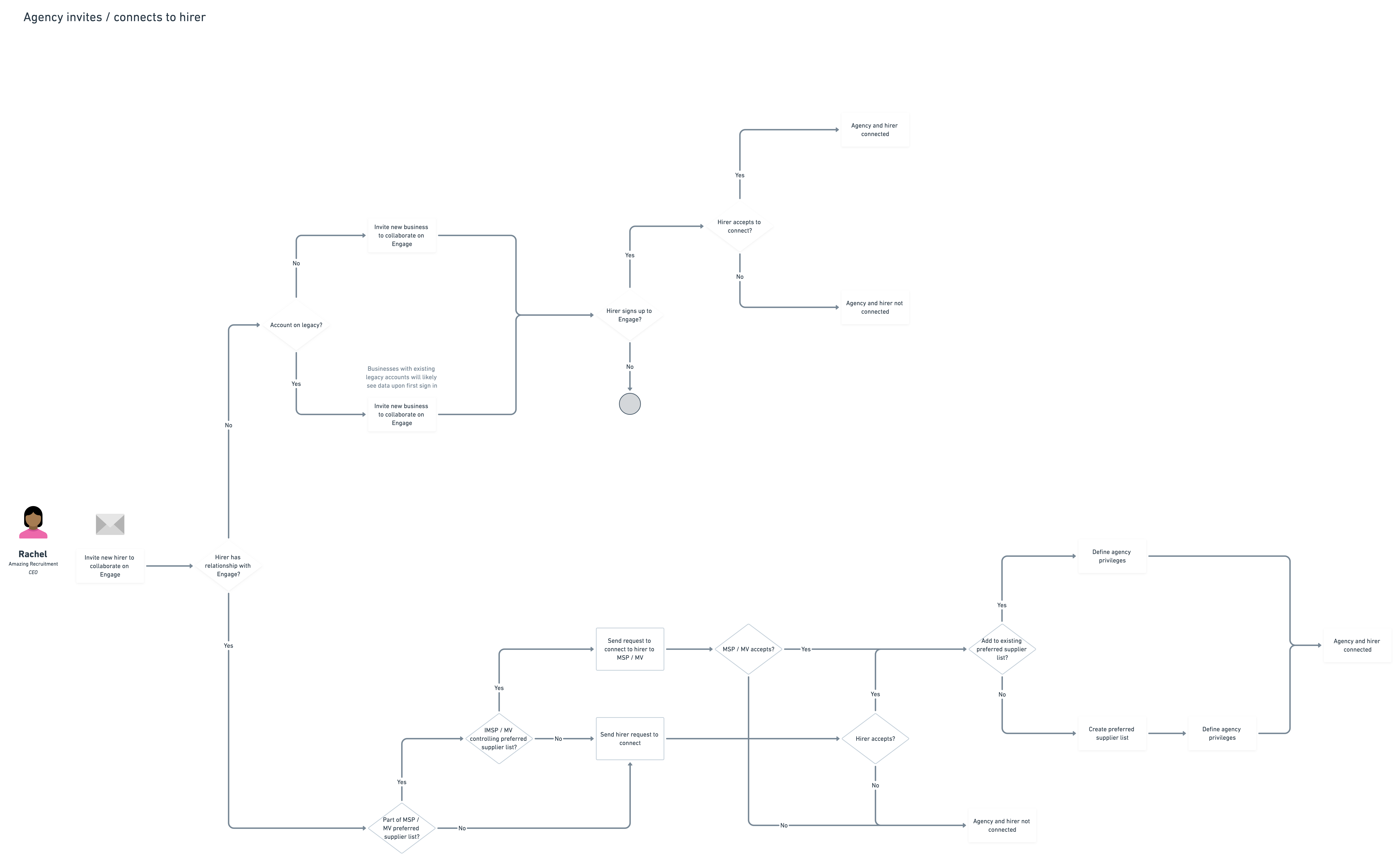
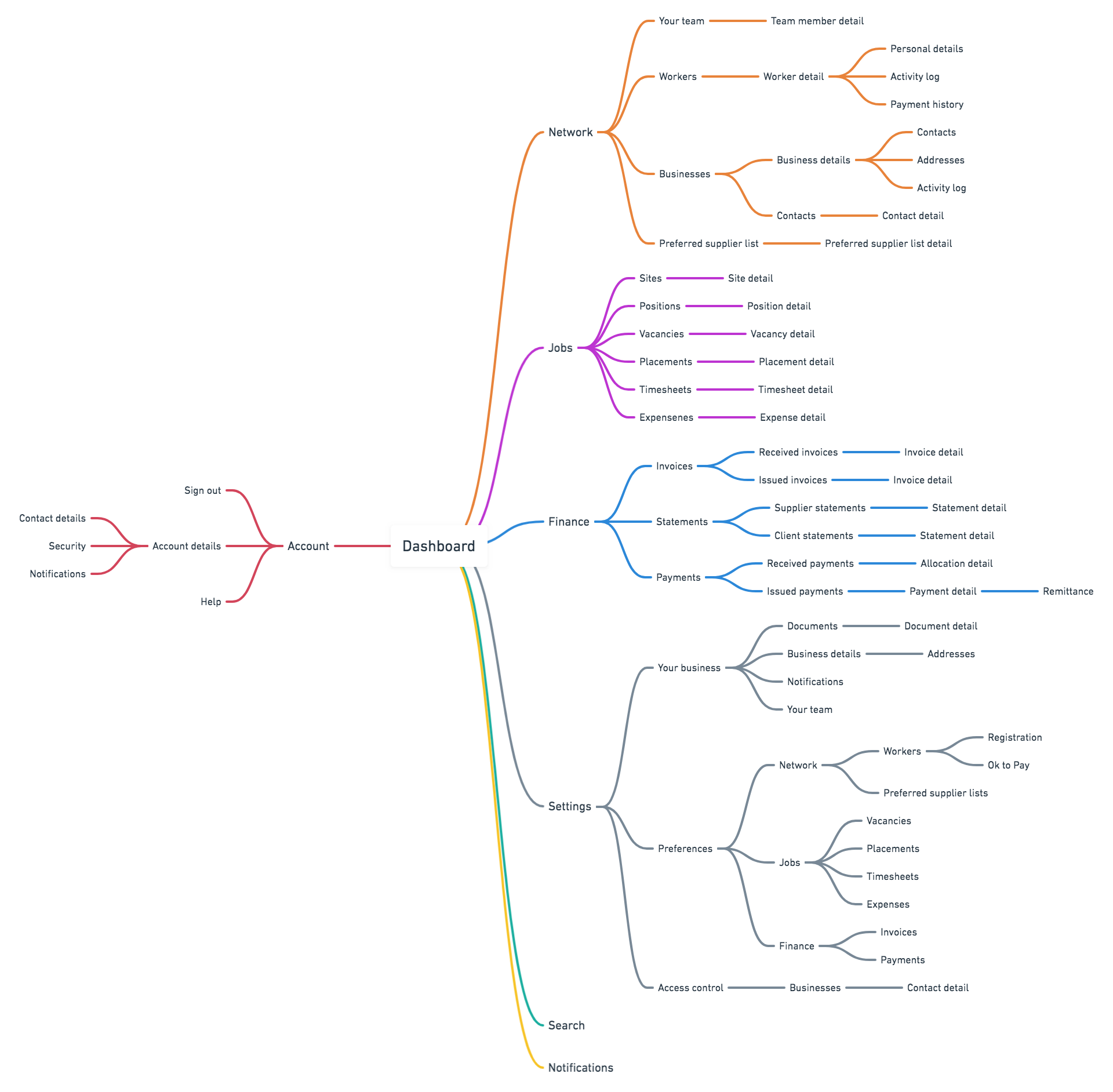
Signing up to Engage
If we were to make these new agencies successful and indeed help them grow their business we needed a way to simply and quickly sign up to the product. In the current workflow this was a very manual process for our onboarding team and could take weeks, mainly because of the sheer size of companies we onboarded.
We introduced a new flow that allowed agencies to sign up to Engage and get started within minutes. The product team decided that anything new we were implementing were to use the new design system which we were starting to roll out.
We also took the opportunity to introduce new analytics tools like Full Story and Mixpanel to get insights in our (potential) user’s behavior. Based on that data we saw there was a big drop off from people arriving on our landing page, entering their email address but then not finishing the sign up form completely. We introduced a second sign up form so we could A/B test which one performed better, all designed by fellow designer Nass.
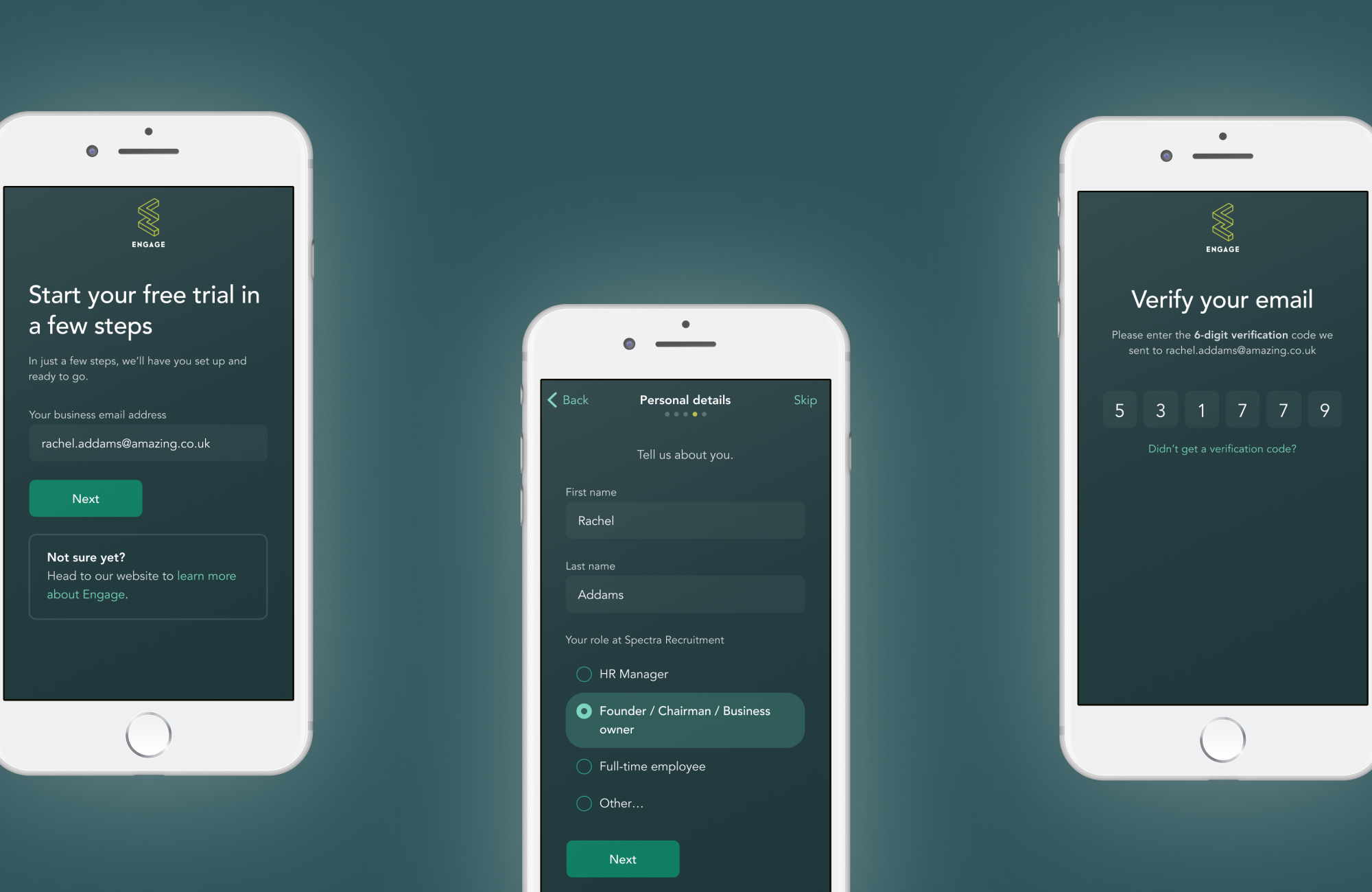

Overall, this resulted in 40 new agencies signing up within the first two months of the first iteration being live. This might not seem like a lot, but knowing we had 120 agencies using the product prior to launch it meant we achieved a 33% growth within a very short time.
Adding the ability to invite a client
One of the key features for this new MVP solution was the ability to invite clients to join agencies on the platform. Without a client agencies didn’t have any use for Engage since it is a collaboration tool at heart. We needed a way to leverage existing logic to implement the feature. Based on our interviews we knew that agencies wanted to have control of their platform and data and didn’t want to burden their clients with any unnecessary admin.
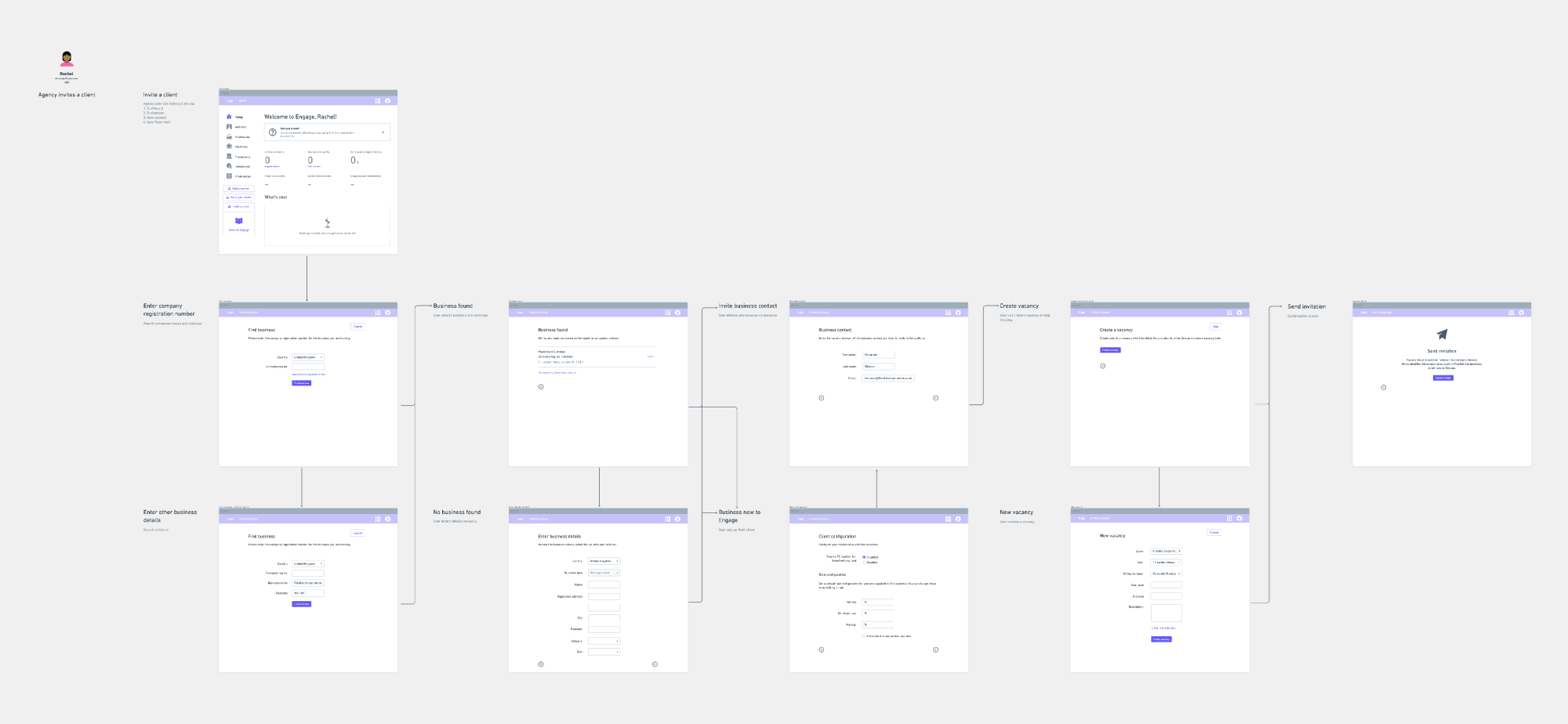
Business invite wireframes
Review, interview, iterate
Because we intently launched an MVP in a very short time we set ourselves the goal to get as much feedback, learn and move forward based on what we’d learned. A few things stood out that could be immediately picked up.
Data from analytics tools and user interviews showed us that our initial thinking around inviting a client needed to be tweaked. It was not just a case if agencies wanted to invite their clients, but when that was truly important. We separated the ability for agencies to setup their platform and enter their client’s data without needing to invite their client. This meant the agency could invite them when they needed them to action something. We also updated our empty states so users had a better understanding what they needed to do in order to be successful.
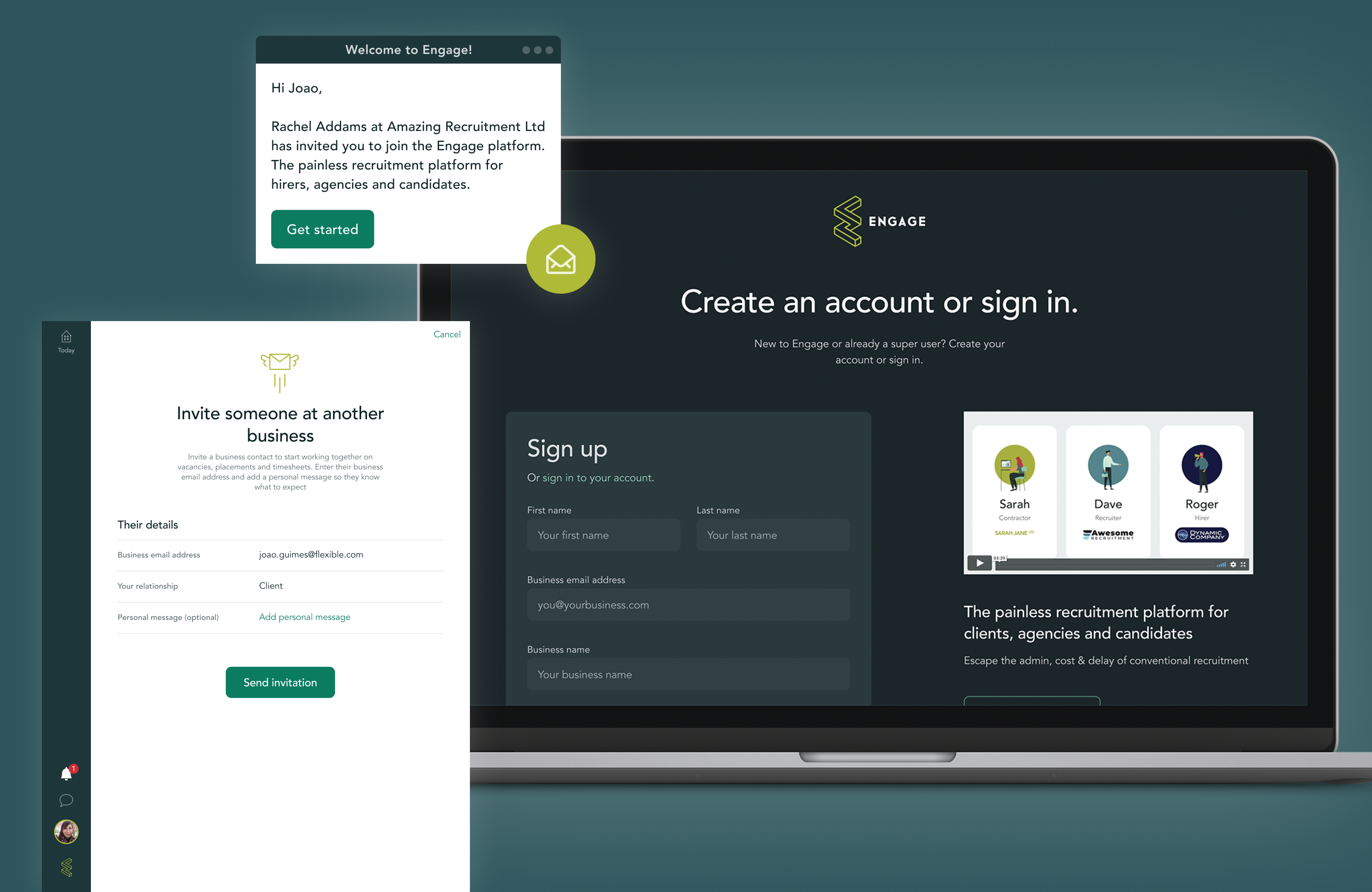
New business invite workflow
Self-billing for everyone
A feature request that couldn’t be implemented with a quick fix was the ability for agencies to raise invoices on behalf of their suppliers (e.g. contractors and umbrella businesses). This was already part of our roadmap but based on feedback we knew we had to prioritise this feature.
Read the full case ︎

Self-billing for contractors
Reflection
Although I had prior experience in leading a team of engineers and designers, this project was on a bigger scale. Together with my tech lead Barnabas we achieved a lot in a very short period. I learned a lot on what it means to drive a project that is directly tied to MRR and plays a major part in an organisation’s strategy and vision.As a result of the work we’ve done so far Engage decided this was the way forward into the future. Because our deadlines were quite ambitious we knew we wouldn’t be able to do everything we’d intended to do. However, we managed to ship some core functionality that wasn’t there before which set the business up for further success.
Amsterdam - ︎ mootdavid@gmail.com